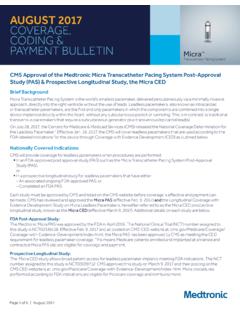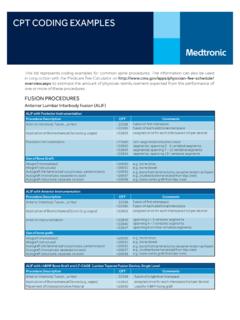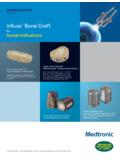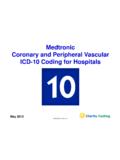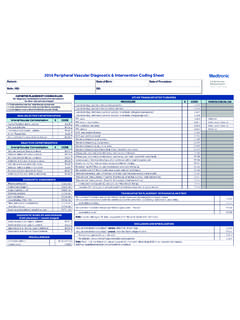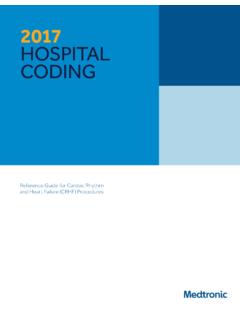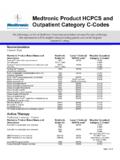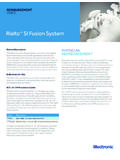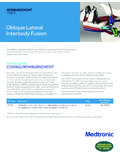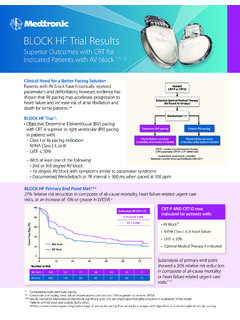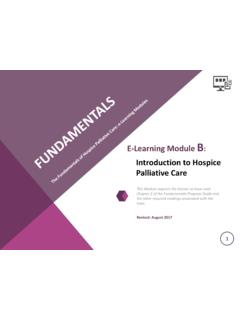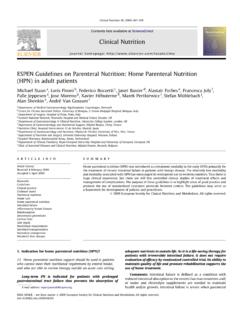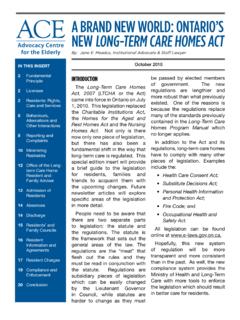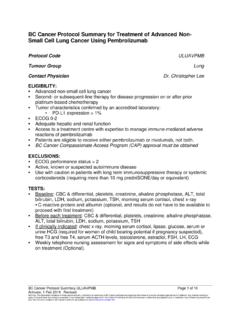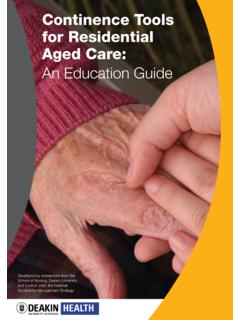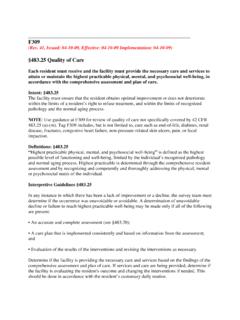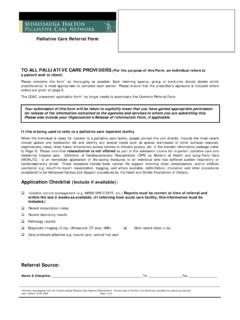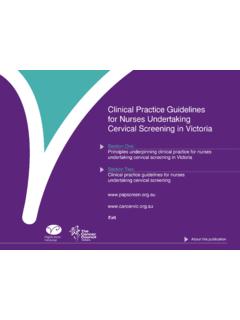Transcription of For Continence Management - Medtronic
1 ITable of ContentsUrinary and Bowel IncontinenceACT Program for Continence ManagementNursing Care PlansBowel And Bladder RetrainingEducational MaterialF315 and MDS ComplianceInteractiveACT Program For Continence ManagementAssessment and Continence Training2 Table of ContentsUrinary and Bowel IncontinenceACT Program for Continence ManagementNursing Care PlansBowel And Bladder RetrainingEducational MaterialF315 and MDS ComplianceTable of ContentsContents1. INTRODUCTION ..32. Urinary and Bowel is urinary incontinence?
2 5 Function of the Urinary System ..5 Identifying Incontinence ..6 Summary of the Types and Causes of Urinary Incontinence ..7 What is bowel incontinence? ..8 Anatomy of the Digestive System ..9 Function of the Digestive System ..103. Assessment and Continence Training (ACT) Program ..11 What Steps Should I Take? ..12 Step 1: 1: 2: Diagnosis ..13 Step 3: Planning ..13 Step 4: Implementation ..14 Step 5: Evaluation ..144. Bowel and Bladder Retraining Implementation ..15 Bowel and Bladder Retraining Goals.
3 16 Starting a Bowel and Bladder Retraining Program ..17 Behavioral Treatments ..181. Prompted Voiding ..192. Scheduled Voiding ..193. Pelvic Muscle Exercises ..20 Bowel Retraining Techniques ..205. F315 and MDS Compliance ..21F315 Compliance Checklist ..23 MDS and Incontinence ..256. EDUCATIONAL MATERIAL ..26 Skin Care ..26 Resident Teaching Instructions ..27 Pharmaceutical Management of Incontinence ..28 Drugs Affecting Incontinence ..28 Additional Resources ..297. Forms and Nursing Plans ..303 Table of ContentsUrinary and Bowel IncontinenceACT Program for Continence ManagementNursing Care PlansBowel And Bladder RetrainingEducational MaterialF315 and MDS ComplianceAs a concerned caregiver, you know the challenges incontinence can present both for your resident s quality of life and for you as a medical professional working to improve physical and mental health.
4 Incontinence is not a normal part of aging and is a symptom, not a disease. In many cases, it can be program is designed to take you through a process that will help you assess the specific needs of each incontinent resident and design a care plan to meet the physical and psychosocial challenges presented. This can be done in a manner consistent with the overall goal of your healthcare facility and the F315 guidelines as outlined by the Centers for Medicare & Medicaid Services (CMS). The goal of the program is to help each incontinent resident achieve their highest level of Continence .
5 The Assessment and Continence Training (ACT) Program is one tool to assist you in reaching the goals of your healthcare facility as well as to aid you in achieving compliance with the F315 and MDS guidelines. Please note that this tool may be used in conjunction with other tools available to achieve those goals. The practices described in this program are meant to be general guidelines only. Caregivers should consult with and rely on trained practitioners and their own facility s protocols to determine proper care and treatment regimens for their to use the ACT a facility team member to manage the with a Covidien Nurse Consultant for the Bowel and Bladder Daily Diary to deter mine the resident s voiding and bowel pattern uponadmission and with any significant change in the Physical Assessment form to determinethe type of incontinence upon admission and with anysignificant change in
6 Appropriate plan of care for appropriate incontinence product for usebased on level of a Nursing Care resident s program and re evaluate Flow Sheets, Evaluation Forms, and Resident Logs to document resident progress or make necessary modifi cations to the bowel/bladder retraining program10. Educate resident and family about program goals andprogressINTRODUCTIONT able of ContentsUrinary and Bowel IncontinenceACT Program for Continence ManagementNursing Care PlansBowel And Bladder RetrainingEducational MaterialF315 and MDS Compliance4 Urinary and Bowel IncontinenceIncontinence is defined as the inability to control the release of urine or stool.
7 5 Table of ContentsUrinary and Bowel IncontinenceACT Program for Continence ManagementNursing Care PlansBowel And Bladder RetrainingEducational MaterialF315 and MDS ComplianceUrinary IncontinenceWhat is urinary incontinence?Urinary incontinence is defined as the inability to control the release of urine at the appropriate time or place. Incontinent episodes can range from infrequent, involuntary discharge of large volumes of body waste to constant or intermittent dribbling of small amounts of incontinence is not considered a normal part of aging.
8 It is a symptom of an underlying condition and may be reversible. If it is found to be irreversible, it is important to manage the incontinence to reduce potential affects the resident at three levels: Physical effects of incontinence: Changes in skin integrity Skin irritation or breakdown Urinary tract infections Sleep disturbances Psychosocial effects of incontinence: Social withdrawal Embarrassment Loss of dignity Feelings of isolation Interference with participation in activities Economical effects of incontinence.
9 Cost of testing to diagnose incontinence Treatment cost (drugs or surgery) Management cost (labor, supplies, laundry)Most elderly residents who are incontinent do have some degree of bladder control, either consciously or uncon sciously. Their chronic incontinence is mainly due to abnormalities in the function of the bladder detrusor muscle (bladder wall) and/or the sphincter muscles (outlet). For this reason, it is important to understand the function of the lower urinary of the Urinary SystemFunction of the Urinary System1 There are four main structures in the urinary system: the kidneys, the ureters, the bladder and the urethra.
10 The function of the urinary system is to remove waste from the body. The urinary system also regulates the amount of water in the body. Voiding, urination and micturition are terms that refer to the process of emptying the output volume of urine depends on f luid intake, cardiac output, hormonal inf luences and f luid loss through the lungs, skin and the large bowel. The approximate urine output of the healthy adult is between 1000 mL and 1500 mL per day with an average void measuring between 200 mL and 400 mL.
